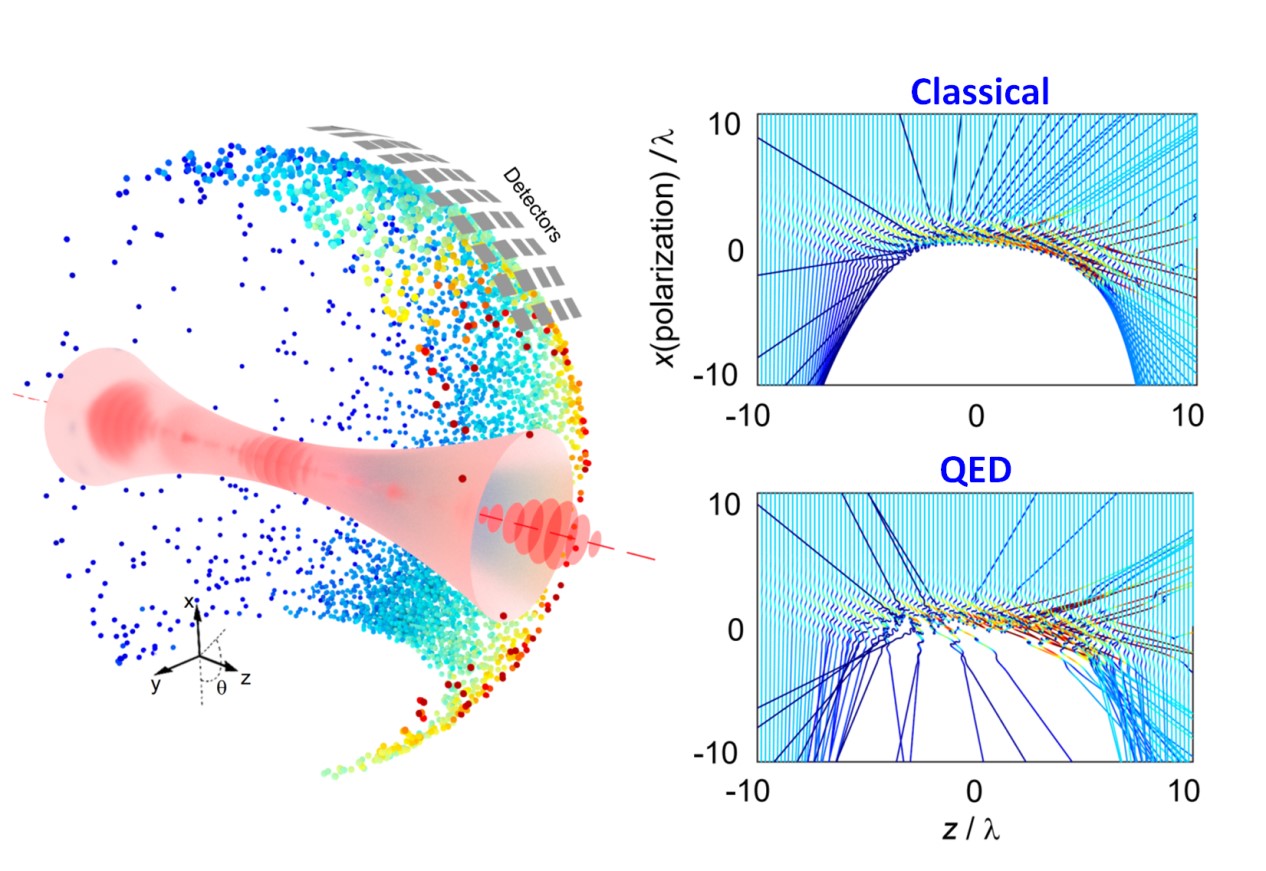The radiation from accelerated particles and the consequent radiation-reaction (RR) effect is one of the oldest and most fundamental problems in electrodynamics, where particles lose momentum from radiation. For most problems, one can calculate the electron trajectory in a given external electromagnetic field and the sequential radiation independently. However, when the radiation from the particle is coupled with its motion, a self-consistent exact solution can not be found in classical physics.
In classical framework, an approximation has been made by Landau and Lifshitz to describe the reaction force from electron radiation, namely the Landau-Lifshitz (LL) equation. By solving this equation, it is found that the RR force is mostly significant when a high energy electron (GeV level) head-on collide with an ultra-intense laser (Petawatt laser) pulse. In this parameter regime, however, due to the inverse, the energy of emitted photons Compton scattering can be comparable to the electron kinetic energy. Therefore, the electron momentum is significantly disturbed at the instance of photon emission. A profound consequence arises where the radiation is not continuously any more but becomes discrete. The emission process then turns out to be a scattering problem that quantum effects must be included. Naturally, Quantum-ElectroDynamics (QED) is the right theory to describe the photon emission and electron behavior in the radiation-reaction regime, since both relativity and quantum effects are effective.
A research team in the State Key Laboratory of High Field Laser Physics, Shanghai Institute of Optics and Fine Mechanics of the Chinese Academy of Sciences (CAS) proposed a cross-collision scheme to demonstrate the quantum behavior of high energy electrons. The result was published in Communications Physics.
The core interest in their study is to identify the QED feature for relativistic electrons moving in extremely strong laser fields that can be captured in possible experiments. This is the key to clarify the boundary between classical physics and QED theory in the strong-field regime.
The team used a 100PW-level laser pulse perpendicularly colliding with a relativistic electron bunch of ~100 MeV. While the classical theory prohibits electrons to transmit the laser field, the QED calculation showed that a significant portion of electrons could pass through the laser pulse due to the stochastic nature of quantum behavior. By measuring the number of electrons transmitting/reflected, the QED feature could thus be identified.
Laser facilities of 10-100PW peak power are being designed and constructed worldwide. It is essential to learn the correct theory that governs the interaction between lasers and matter.
The mechanism discovered in this work can serve as a new approach to define the boundary between classical and QED theories in the strong field regime and therefore provide new perspectives for laser-matter interaction.
This work is supported by the Ministry of Science and Technology of the People’s Republic of China, the National Science Foundation of China, the Strategic Priority Research Program of Chinese Academy of Sciences, and the Recruitment Program for Young Professionals.

Illustration of the cross-collision and the electron trajectories in the classical and QED picture (Image by SIOM)
Article website: https://www.nature.com/articles/s42005-019-0164-2
Contact:
Mr. Cao Yong
General Administrative Office
Shanghai Institute of Optics and Fine Mechanics, CAS
Email: caoyong@siom.ac.cn







